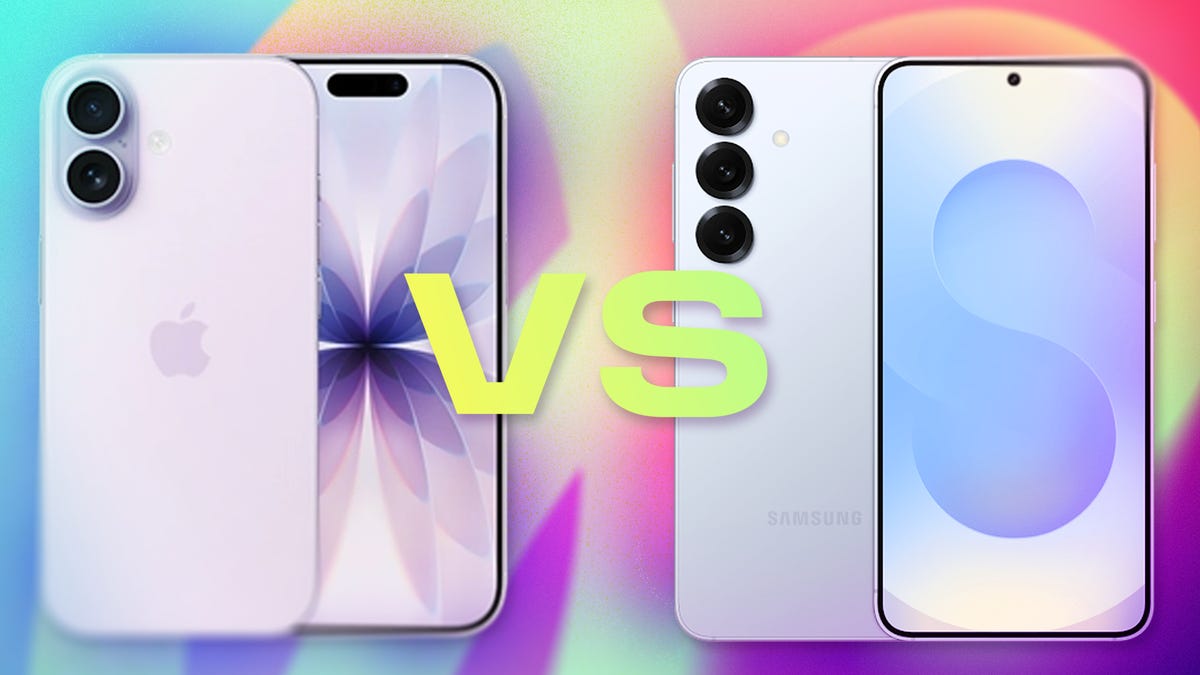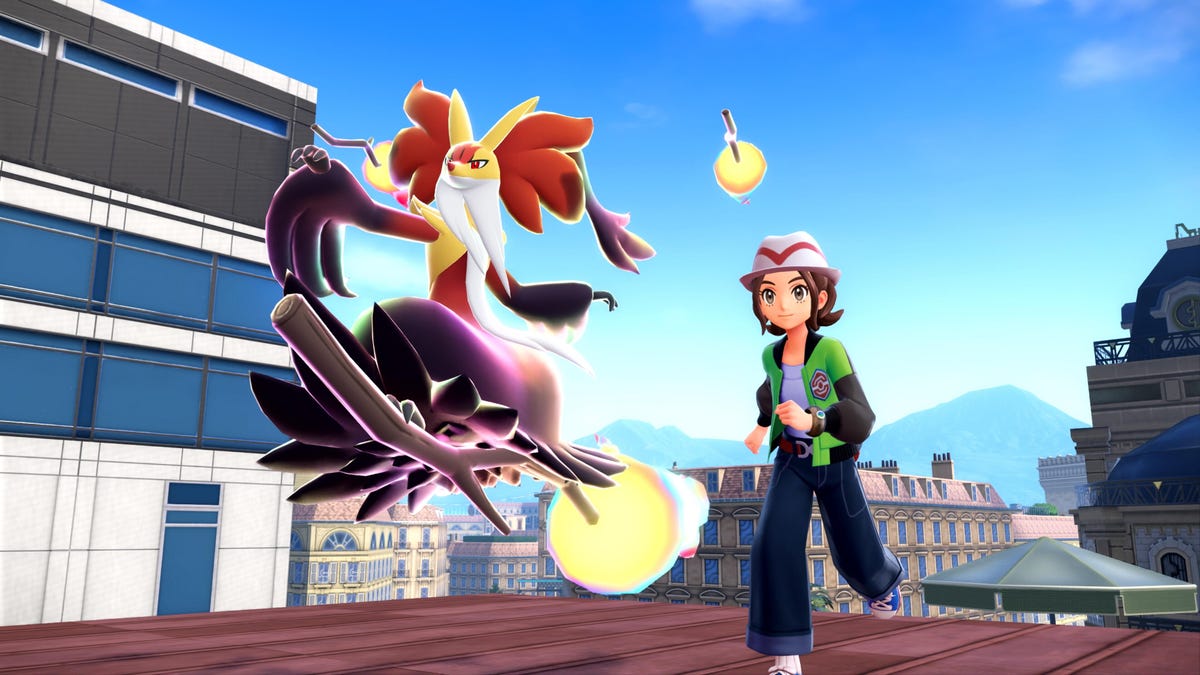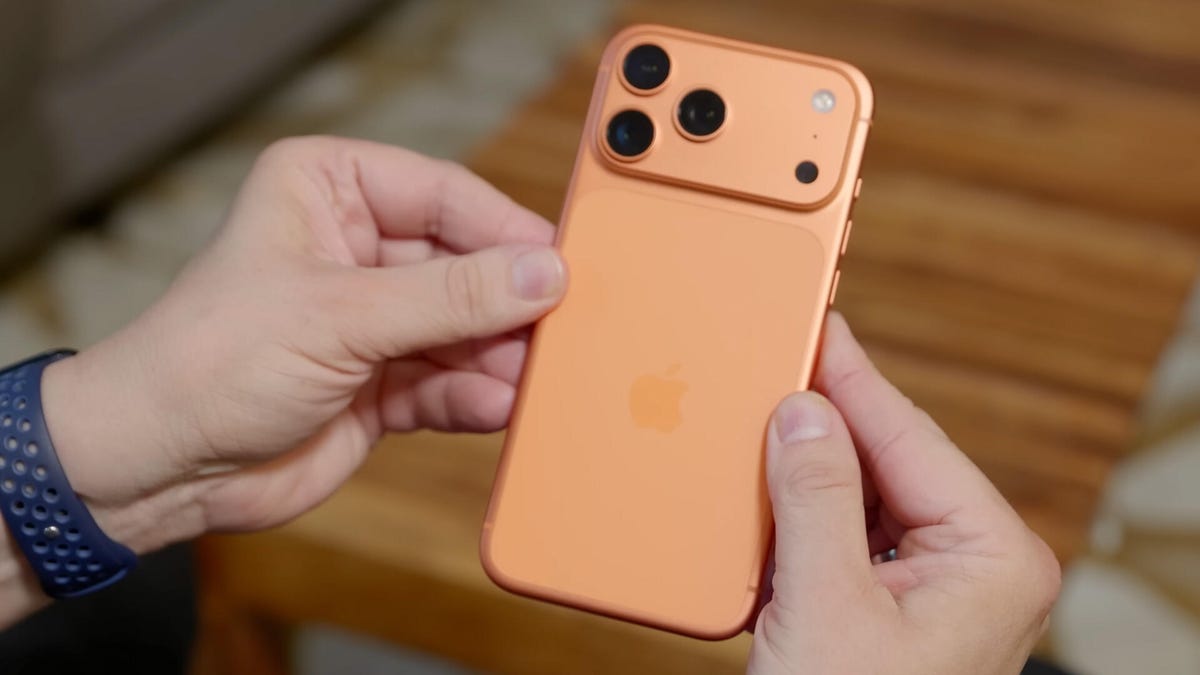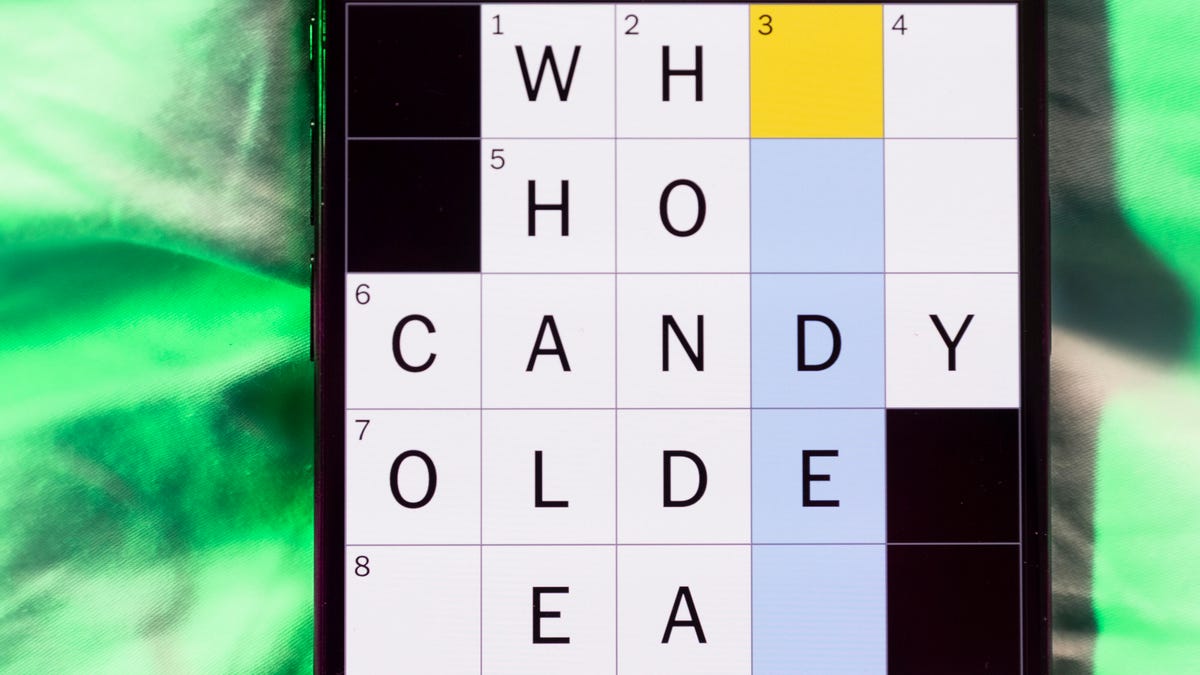Technologies
Apple’s iPhone 17 vs. Samsung’s Galaxy S25: Base Flagship Phones Compared
Apple and Samsung have very similar entry-level phones, so we compare the two.

At long last, there’s a new Apple flagship phone: the iPhone 17. The $799 iPhone 17 is the entry-level model of the new iPhone lineup, which is now on sale with the $999 iPhone Air, $1,099 iPhone 17 Pro and $1,199 iPhone 17 Pro Max.
While the iPhone 17 is the base option, there’s nothing basic about it. It features plenty of updates like a 120Hz ProMotion display, upgraded cameras and a faster A19 chip. Our review points out how it offers considerable upgrades over the iPhone 16 and might be a better option than the iPhone 17 Pro, depending on your needs.
Since there’s a new base iPhone, we figure it’s only fitting to compare it to one of its toughest competitors: the base Galaxy S25 from Samsung. The two have very similar characteristics and would make excellent smartphones, depending on whether you’re on the Apple or Android side of the divide.
So how do these two flagships stack up? Let’s take a closer look.
Don’t miss any of our unbiased tech content and lab-based reviews. Add CNET as a preferred Google source.
Display
One of the biggest updates to the iPhone 17 over its predecessor is that it finally has a ProMotion display with a 120Hz variable refresh rate, which has only been in the iPhone’s Pro models to this point. This allows for an always-on display so you can glance at your notifications and Live Activities without having to wake the screen. Plus, it offers a smoother experience when playing games or scrolling through the web. Aside from the refresh rate, the iPhone 17 has a larger 6.3-inch OLED screen with a 2,622×1,206-pixel resolution and 3,000 nits of brightness.
Samsung’s Galaxy line has had a 120Hz variable refresh rate for a while (ever since the S20), and it’s no different with the Galaxy S25. The S25 also has an always-on display option, which can be configured to show all the time or by tapping the screen. Its 6.2-inch AMOLED display isn’t quite as sharp with a 2,340×1,080-pixel resolution, and it’s also not quite as bright, at 2,600 nits at peak brightness.
Cameras
When it comes to the number of cameras, the Galaxy S25 has the iPhone 17 beat. It has not one, not two, but three cameras: A 50-megapixel wide, a 12-megapixel ultrawide and a 10-megapixel telephoto. The iPhone 17, on the other hand, just has two, but they’re not too bad: a 48-megapixel wide and a rather impressive 48-megapixel ultrawide. That 48-megapixel ultrawide does give the iPhone 17 a lot of photo-taking flexibility, especially in comparison to the iPhone 16 and the iPhone 17 Air, and we were very impressed with the resulting photos.
The Galaxy S25’s telephoto camera supports a 3x optical zoom, while the iPhone 17 supports a 2x optical zoom.
The S25’s front-facing camera has a 12-megapixel lens, while the iPhone 17’s has an 18-megapixel one. The iPhone 17 also boasts a new Center Stage feature that lets you take landscape selfies without rotating the phone.
In terms of video, the S25 can shoot in 8K video at 30 frames per second, while the iPhone 17 can shoot in 4K at 30 and 60 frames per second.
Battery life
Apple hasn’t shared the exact battery specs of the iPhone 17, but we do know it has up to 30 hours of video playback. According to the company, it also uses a new AI-powered Adaptive Power feature on iOS 26 that can help conserve battery life with performance adjustments. The Galaxy S25 has a 4,000-mAh battery, which Samsung says provides up to 29 hours of video playback.
The two phones appear pretty comparable when it comes to battery life. In our tests, we found that the Galaxy S25 lasts around a day and a half with regular use. The iPhone 17, on the other hand, lasts a little over a day, with about 30% battery life after 24 hours.
Price
Both the iPhone 17 and the Samsung Galaxy S25 start at around $800, but at very different storage sizes. The iPhone 17 starts at $799 ($829 if you get it without a carrier) for the 256GB version, while the Samsung Galaxy S25 will cost you $800 for the 128GB model. Stepping up to the 256GB edition of the Galaxy S25 adds $60 to the price.
Check out the specs chart below for more comparisons between the iPhone 17 and the Galaxy S25.
Apple iPhone 17 vs. Samsung Galaxy S25
| Apple iPhone 17 | Samsung Galaxy S25 | |
|---|---|---|
| Display size, resolution | 6.3-inch OLED; 2,622×1,206 pixel resolution; 1-120Hz variable refresh rate | 6.2-inch AMOLED; 2,340×1,080 pixels; 1-120Hz adaptive refresh rate |
| Pixel density | 460ppi | 416 ppi |
| Dimensions (inches) | 5.89 x 2.81 x 0.31 in | 5.78 x 2.78 x 0.28 in. |
| Dimensions (millimeters) | 149.6 x 71.5 x 7.95 mm | 146.9 x 70.5 x 7.2 mm |
| Weight (ounces, grams) | 177 g (6.24 oz) | 162g (5.71 oz.) |
| Mobile software | iOS 26 | Android 15 |
| Camera | 48-megapixel (wide) 48-megapixel (ultrawide) | 50-megapixel (wide), 12-megapixel (ultrawide), 10-megapixel (3x telephoto) |
| Front-facing camera | 18-megapixel | 12-megapixel |
| Video capture | 4K | 8K |
| Processor | Apple A19 | Qualcomm Snapdragon 8 Elite for Galaxy |
| RAM/Storage | RAM N/A + 256GB, 512GB | 12GB RAM + 128GB, 256GB |
| Expandable storage | None | None |
| Battery/Charger | Up to 30 hours video playback; up to 27 hours video playback (streamed) | 4,000 mAh |
| Fingerprint sensor | None (Face ID) | Under display |
| Connector | USB-C | USB-C |
| Headphone jack | None | None |
| Special features | Apple N1 wireless networking chip (Wi-Fi 7 (802.11be) with 2×2 MIMO), Bluetooth 6, Thread; Action button; Camera Control button; Dynamic Island; Apple Intelligence; Visual Intelligence; Dual eSIM; 1 to 3,000 nits brightness display range; IP68 resistance; Colors: black, white, mist blue, sage, lavender; Fast charge up to 50% in 20 minutes using 40W adapter or higher via charging cable; Fast charge up to 50% in 30 minutes using 30W adapter or higher via MagSafe Charger. | 2,600-nit peak brightness; 7 years of OS and security updates; 5G (mmWave); IP68 water and dust resistance; wireless PowerShare to charge other devices; 25W wired charging (charger not included); Galaxy AI; Wi-Fi 7 |
| Price off-contract (USD) | $829 (256GB) | $800 (128GB) |
| Price (GBP) | £799 (256GB) | £799 (128GB) |
| Price (AUD) | AU$1,399 (256GB) | AU$1,399 (256GB) |
Technologies
Nintendo’s Pokemon Legends: Z-A Is a Hit. Just Ask My Kid
Pokemon Legends: Z-A has sucked my family in, and I can’t get my Switch controller back from my son.

I’d love to tell you all about Pokemon Legends: Z-A, arriving this week, and what it’s been like to play on the Nintendo Switch 2. I can mostly do that — but for most of the past five days, it hasn’t really been me playing. What started as co-playing together quickly turned into my kid taking over completely as he got hooked. And honestly, I’d say that’s a good sign.
Nintendo makes a lot of Pokemon games, too many for me to keep track of. But Legends Z-A is the first that’s Switch 2-optimized, although you can play on original Switches, too. I can’t tell you what that’s like, though — my early review access limited me to playing Pokemon Legends: Z-A on the Switch 2 only at home. I was doubtful about how much a city-based game would truly feel like a must-have experience, but so far it’s already become one of my favorite Pokemon games ever.
I’ll let my son tell you. He’s gotten deep into the trading card game and has played most of the recent Pokemon titles over the past year, and he says this is his favorite so far. When I asked him why, he said it’s because the game completely rethinks how battles work. The quick, real-time system feels more immediate and far less sluggish than in past Pokemon games. Plus, he’s loving the story… and honestly, so am I.
A city full of surprises
My son loves the «peculiar» storyline, the fast-paced battles (which he now wants in every Pokemon game) and the constant sense of surprise while exploring Lumiose City.
All of Pokemon Legends: Z-A (at least from what I’ve seen in my 10-plus hours so far) takes place entirely within Lumiose City — a Paris-like metropolis where the CEO of a company called Quasartico Inc. is planning to rebuild everything into a new world where Pokemon and humans can better coexist. The setup reminded me of the Detective Pikachu movie during my demo a few weeks ago, and it turns out my instincts were right.
Pokemon roam in wild zones within the city, occasionally spilling into urban areas, while mysterious rogue «Mega Evolution» Pokemon have begun appearing and threatening the city’s calm. There’s clearly a deeper mystery at play, and while I’m still uncovering it, I won’t spoil anything here.
The game seems to mostly involve a journey to level up in rank from Z to A by battling various Pokemon trainers, but that’s not the whole story. There’s a group of friends you hang out with at a local hotel, along with research missions you have to carry out. Side quests are everywhere. The city, though it can feel a bit sparse at times, stretches all the way up to its rooftops, where all sorts of hidden spots are waiting to be discovered. It feels like a living maze, and one I’m still navigating.
And the city’s always changing, too. Wild zones keep multiplying, and from day to night the city’s dynamics shift. Battles take place at night, with trainers gathering in new pop-up spots each time. It’s not as lively as I’d hoped — this isn’t Grand Theft Pokemon — but the cozy, vibrant world still makes me daydream about what a real-life Universal Pokemon theme park could someday look like.
The Pokemon shine
I keep reminding myself to take extra time to discover and level up my Pokemon. At least that’s what my son’s telling me to do. He loves how many Pokemon can become Mega Evolved in this game, and how much fun the battle moves are to pull off. I’m happy he’s happy. I thought I’d get lost in the RPG aspects of the game, but I think the real-time Pokemon battles put me in a looser state of mind, more able to explore and not feel locked down into systems and rulesets. Swapping Pokemon battle moves and reassigning them to buttons is easy, too.
The stronger focus on trainer battles — and the sheer variety of Pokemon capable of mega evolving — gives the game more of that classic, Pokemon-centered energy than Pokemon Legends: Arceus ever did. I found myself more excited to see how different Pokemon looked and behaved than to uncover new realms to explore. After all, for all of Lumiose City’s secrets, you’re spending a lot more time roaming one massive location than in any other Pokemon game I can remember. Thankfully, the visual upgrades on the Switch 2 make those Pokemon look fantastic in battle.
I do want to spend more time in Lumiose City, though, and can’t help but wonder if this is a glimpse of how all Pokemon games will keep evolving. It’s hard to say, since Legends games like Z-A and Arceus have been more experimental than the rest of the series. But, like Arceus, Z-A is now one of my favorite Pokemon games on Switch. And on Switch 2, it plays smoother and feels better than any Pokemon game ever has before.
Technologies
iPhone 17 Preorders Spike and Overall Phone Sales Aren’t Slowing Down Despite Tariffs
Global smartphone shipments saw a notable increase in the third quarter of 2025. Plus, preorders for Apple’s new iPhone 17 beat out the iPhone 16.

Despite tariffs and market uncertainty, global smartphone shipments increased 2.6% in the third quarter of 2025, compared to the same time last year, according to the International Data Corporation. Additionally, preorders for the iPhone 17, which launched last month, outpaced last year’s iPhone 16.
These increased sales include premium phones like the latest iPhones and Samsung foldables, suggesting yet again that pricier phones still sell in periods of economic strain. It’s a remarkable achievement, says IDC senior research director Nabila Popal, citing shrewd financing options as the reason people keep buying these high-end phones, which cost anywhere from $800 to nearly $2,000.
«[Phone makers] have mastered the art of innovation not only in hardware and software to entice upgrades but also in removing purchase friction. They have flawlessly combined cutting-edge devices with innovative financing models and aggressive trade-in programs that make the upgrading decision a ‘no-brainer’ for consumers,» Popal said in an IDC press release.
Apple sold 58.6 million iPhones this quarter, an increase of 2.9% over the same period in 2024, with more preorders for the iPhone 17 series than its predecessor. But Samsung wasn’t far behind, with its Galaxy Z Fold 7 and Galaxy Z Flip 7 selling better than all of the company’s prior foldables. The company still reigns atop the phone market with 61.4 million phones sold, representing 19% of the market in the third quarter of this year — an increase of 6.3% from the same period last year. Meanwhile, Apple lands slightly behind Samsung with 18.2% market share this quarter.
The other phone makers trailing Apple and Samsung are, in order: Xiaomi, with 13.5% of the market; Transsion, with 9%; and Vivo with 8.9%. The remaining companies in the phones industry, from Chinese stalwarts like Oppo and Honor to Motorola and Google, make up the remaining 31.4% of the market for the quarter. All told, 322.7 million phones were sold, up from 314.6 million in the third quarter of 2024, according to IDC.
IDC’s findings for the third quarter continue the small but steady growth of phone sales over the year, including a modest 1% increase in the preceding three months — which includes the April deadline when President Donald Trump unveiled sweeping tariffs. In the second quarter, IDC cited midrange devices like Samsung’s Galaxy A36 and other phones that started incorporating AI. But even persistent tariffs haven’t slowed down people’s appetites for pricier phones in the third quarter.
Technologies
Today’s NYT Mini Crossword Answers for Tuesday, Oct. 14
Here are the answers for The New York Times Mini Crossword for Oct. 14.

Looking for the most recent Mini Crossword answer? Click here for today’s Mini Crossword hints, as well as our daily answers and hints for The New York Times Wordle, Strands, Connections and Connections: Sports Edition puzzles.
Today’s Mini Crossword has an odd vertical shape, with an extra Across clue, and only four Down clues. The clues are not terribly difficult, but one or two could be tricky. Read on if you need the answers. And if you could use some hints and guidance for daily solving, check out our Mini Crossword tips.
If you’re looking for today’s Wordle, Connections, Connections: Sports Edition and Strands answers, you can visit CNET’s NYT puzzle hints page.
Read more: Tips and Tricks for Solving The New York Times Mini Crossword
Let’s get to those Mini Crossword clues and answers.
Mini across clues and answers
1A clue: Smokes, informally
Answer: CIGS
5A clue: «Don’t have ___, man!» (Bart Simpson catchphrase)
Answer: ACOW
6A clue: What the vehicle in «lane one» of this crossword is winning?
Answer: RACE
7A clue: Pitt of Hollywood
Answer: BRAD
8A clue: «Yeah, whatever»
Answer: SURE
9A clue: Rd. crossers
Answer: STS
Mini down clues and answers
1D clue: Things to «load» before a marathon
Answer: CARBS
2D clue: Mythical figure who inspired the idiom «fly too close to the sun»
Answer: ICARUS
3D clue: Zoomer around a small track
Answer: GOCART
4D clue: Neighbors of Norwegians
Answer: SWEDES
-

 Technologies3 года ago
Technologies3 года agoTech Companies Need to Be Held Accountable for Security, Experts Say
-

 Technologies3 года ago
Technologies3 года agoBest Handheld Game Console in 2023
-

 Technologies3 года ago
Technologies3 года agoTighten Up Your VR Game With the Best Head Straps for Quest 2
-

 Technologies4 года ago
Technologies4 года agoVerum, Wickr and Threema: next generation secured messengers
-

 Technologies4 года ago
Technologies4 года agoGoogle to require vaccinations as Silicon Valley rethinks return-to-office policies
-

 Technologies4 года ago
Technologies4 года agoBlack Friday 2021: The best deals on TVs, headphones, kitchenware, and more
-

 Technologies4 года ago
Technologies4 года agoOlivia Harlan Dekker for Verum Messenger
-

 Technologies4 года ago
Technologies4 года agoiPhone 13 event: How to watch Apple’s big announcement tomorrow
